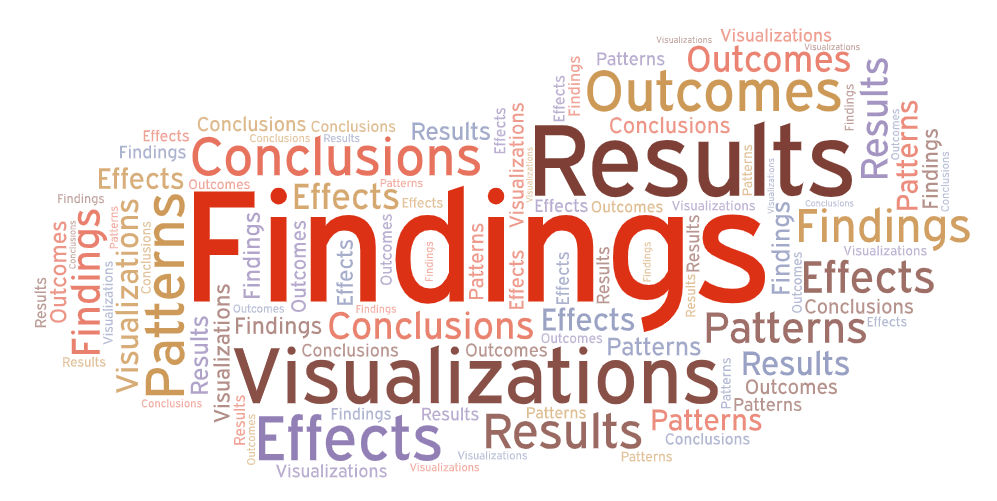Private: Research Forms, Functions, and Skills
2 Research Skills
This chapter will overview the research skills needed for graduate research. The following headings are not an exhaustive list of skills, instead, these are the most common techniques encountered in graduate research projects. Revisiting this chapter throughout the research and writing process is a good idea.
Finding Strong Published Research
The first step in identifying strong published research is to understand the research process. Published research follows a basic writing format. This means that research articles follow the same basic pattern, making them easier to follow and understand. Research articles present an educational problem, review previously published research, explain the methods used in the study, the results and interpretation, and finally the conclusions drawn from the results of the research. If the article does not follow this basic flow, the article may not be a research article.

Using the university’s library database is a good way to begin searching and identifying published research. The search engine has a filtering system. It is best to set the filter to return articles from “peer-reviewed” journals. These have been reviewed by multiple researchers in the discipline who approved the article for publication. The peer review process is discussed later in this book.
Additionally, it is important to set the library database to return research published within the last ten years. The value of educational research is related to its timeliness. Some projects may require cited references published in the last five years, especially projects involving technology-related topics. Things in education change over time; what was true several generations ago is not true today. Research is conducted on the problems of today. However, seminal works written by major leaders in the field may be used even though their research is outside of the “timeliness” window. Seminal works such as research by key theorists like Piaget, Erikson, and Howard Gardner, etc. in education are considered landmark publications and may be used for research projects.
Research articles can also be found via an internet search engine such as, Google Scholar. Google Scholar also has a filtering system to help researchers identify research articles. Unfortunately, the articles returned through Google Scholar may incur a cost to download from the journal. After identifying a good research article in Google Scholar you can search for the article through the university library database. The university library subscribes to many journals and access to the articles is free by signing into the library with a student email account.
A basic internet search will usually return “trade” articles, blogs, or informational websites. Trade articles are those written and published by educational councils, societies, or trade associations. For example, the Educational Leadership magazine is published by the Association of Supervision and Curriculum Development (ASCD). While these trade journals may have some important information or insights, it is important to understand these are not research articles. Citing trade articles, blogs, or internet sites should be minimal in a research project. Trade articles, blogs, and informational websites are great resources for gaining ideas about a research topic, however, these are not considered research upon which to build a scholarly work.
Finding Statistics
Statistics can be found everywhere. Some are trustworthy and others are not. As with identifying strong research articles, identifying trustworthy sources for statistical information is important. The best strategy is to obtain statistics from a .gov website, whether it is federal or state. Most state board of education sites have links to state report cards that provide useful statistics for PK-12 education. The Institute of Education Science (IES.gov) collects education statistics nationally for all levels of education, from PK to higher education. IES.gov is the primary source for trustworthy statistics for education in the United States.
Even when using a trustworthy source, there can be other issues that arise with statistics. One of the more common issues is using out-of-date information. While it may seem a statistic is relevant and important to the current research problem if the statistic was not obtained recently then the results are likely obsolete. Since things change with human beings from year to year, old statistics cannot be applied to current research projects.
Another common issue with statistics is not clarifying the context from which the statistic was taken. The context from which a statistic is measured must be presented. Additionally, the original context of the statistic must match the way it is being used in the research project. Ensure you are not using a statistic about oranges when you are talking about apples.

Identifying Findings
The findings of research articles are the key points of the author’s research and are what you need to cite in your research project. The findings of a research project are the conclusions made based on the data analysis conducted. The findings are “what was found out!” The findings reflect what was learned from the research project. Identifying the findings in a research article involves skimming through to the conclusions made by the author after the presentation of the results. Many times the subheading is called Conclusions or Discussion. This is what the researchers learned from the study: the findings.
The author of a research article reports other authors’ findings in the beginning sections of their article to provide background to their research problem and as part of their literature review. These citations refer to other articles that applies to the author’s research. It is important not to “re-cite” a finding that an author cited because these are not the author’s findings. These reflect the author’s paraphrase of the findings of another author. “Re-citing” is known as secondary sourcing. Secondary sourcing is problematic in many ways, as it is literally paraphrasing a paraphrase of what someone else wrote. Rather, use the citation referenced to obtain the original article to read and cite as a primary source. This ensures that the paraphrased material is paraphrased correctly from the original source.


